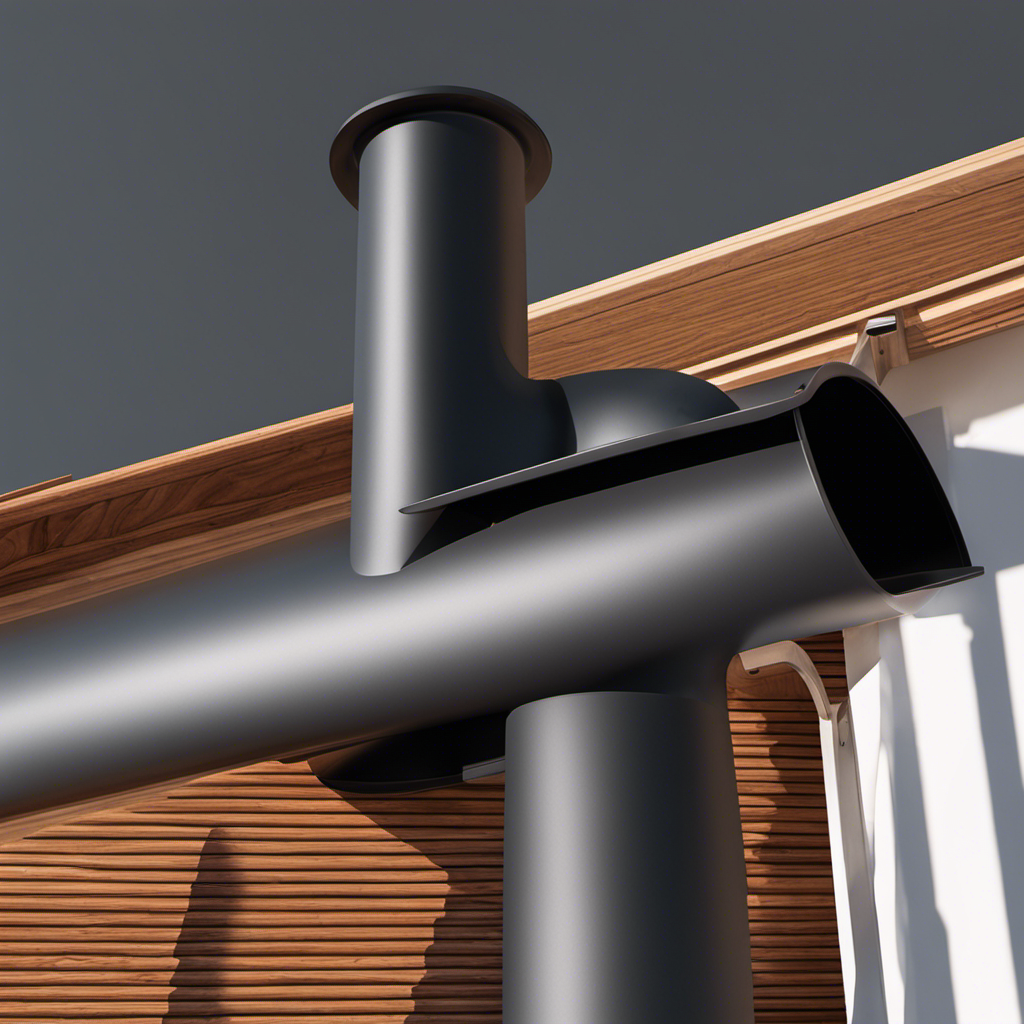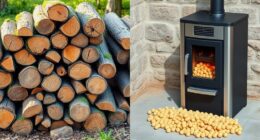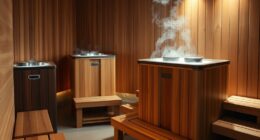So, you’ve gotten yourself a wood-burning stove.
Now, let’s talk about that little thing on top called the flue.
It may seem like a small detail, but trust me, it’s crucial for a safe and efficient fire.
In this article, I’ll guide you through the ins and outs of using the flue like a pro.
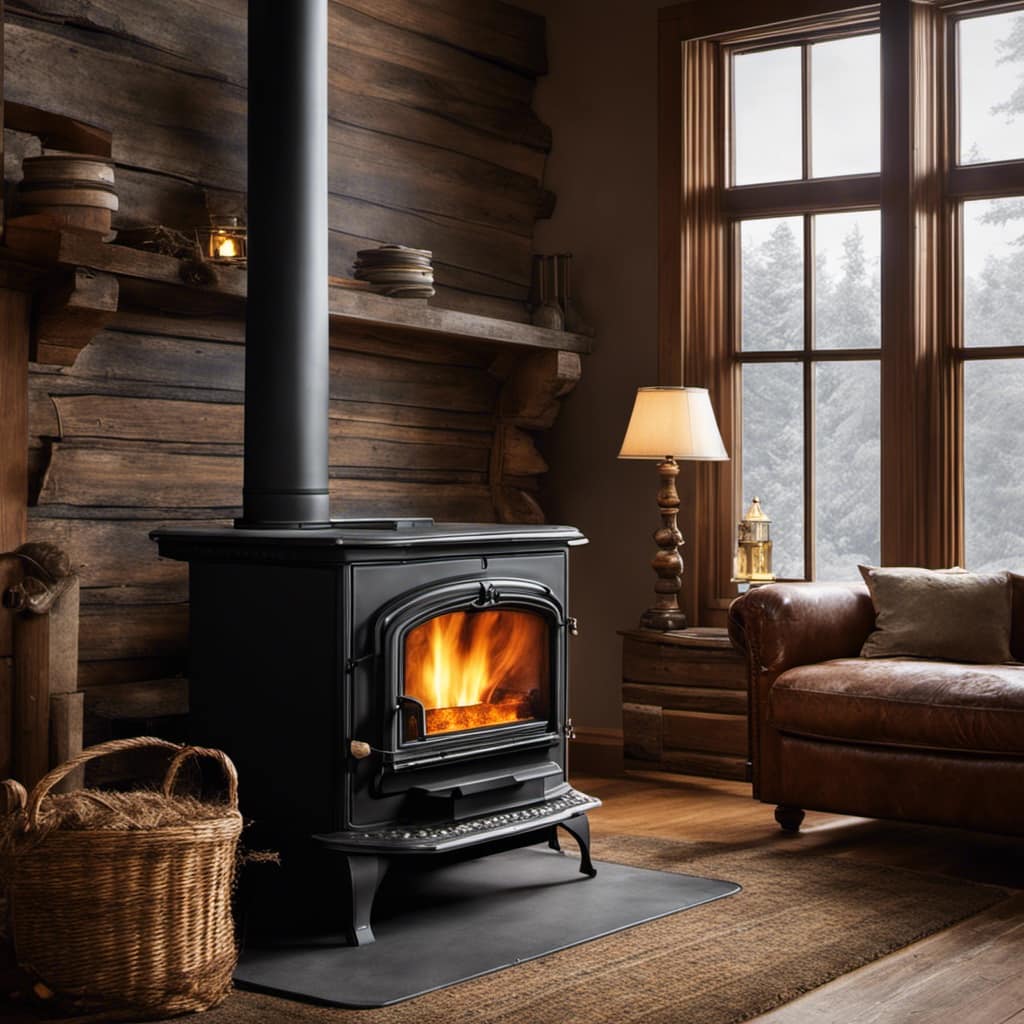
From opening and closing it to adjusting the damper, we’ll cover all the tips and tricks to make your wood stove experience top-notch.
Key Takeaways
- Fully open the flue when starting a fire to allow proper air and smoke flow.
- Adjust the flue to control the heat output once the fire is burning well.
- Regularly maintain and inspect the flue for safe and efficient operation.
- The damper regulates the amount of air flowing into the firebox.
Understanding the Flue: A Beginner’s Guide
I’m still learning about the flue on a wood stove and how it works. The flue is an essential component of any wood stove, as it helps to release the byproducts of combustion safely outside.
It consists of several parts, including the flue pipe, chimney cap, and damper. The flue pipe is the duct that connects the stove to the chimney, allowing the smoke and gases to exit the house.
The chimney cap prevents debris and animals from entering the flue, while the damper controls the airflow and regulates the intensity of the fire.
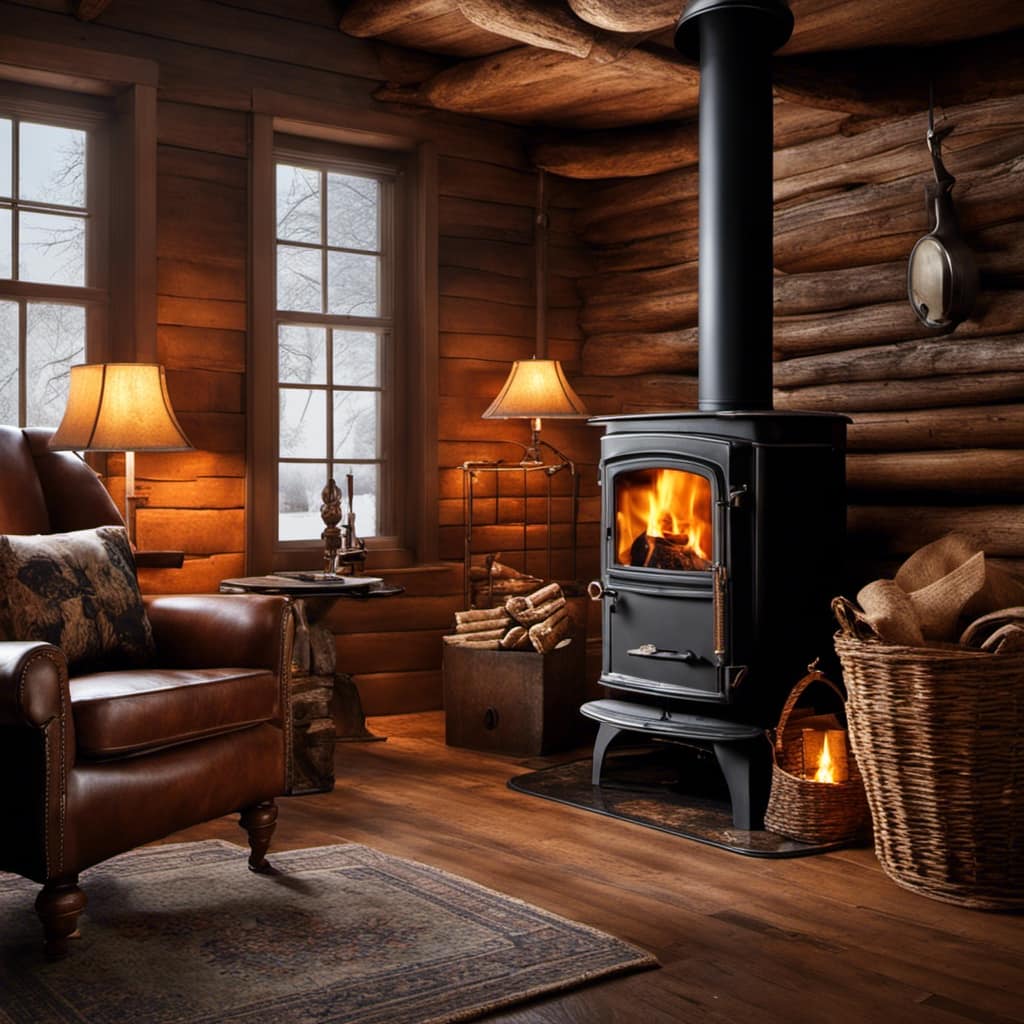
Proper flue installation is crucial for the safe and efficient operation of a wood stove. It’s essential to follow the manufacturer’s instructions and local building codes to ensure that the flue is properly sized, insulated, and secured.
Opening and Closing the Flue: Best Practices
To ensure proper ventilation, I always make sure to open and close the flue according to best practices.
Flue safety is of utmost importance when operating a wood stove. When starting a fire, it’s essential to fully open the flue to allow for the proper flow of air and smoke. This helps prevent the build-up of dangerous gases, such as carbon monoxide, inside the house.
Once the fire is established and burning well, the flue can be adjusted to control the heat output.
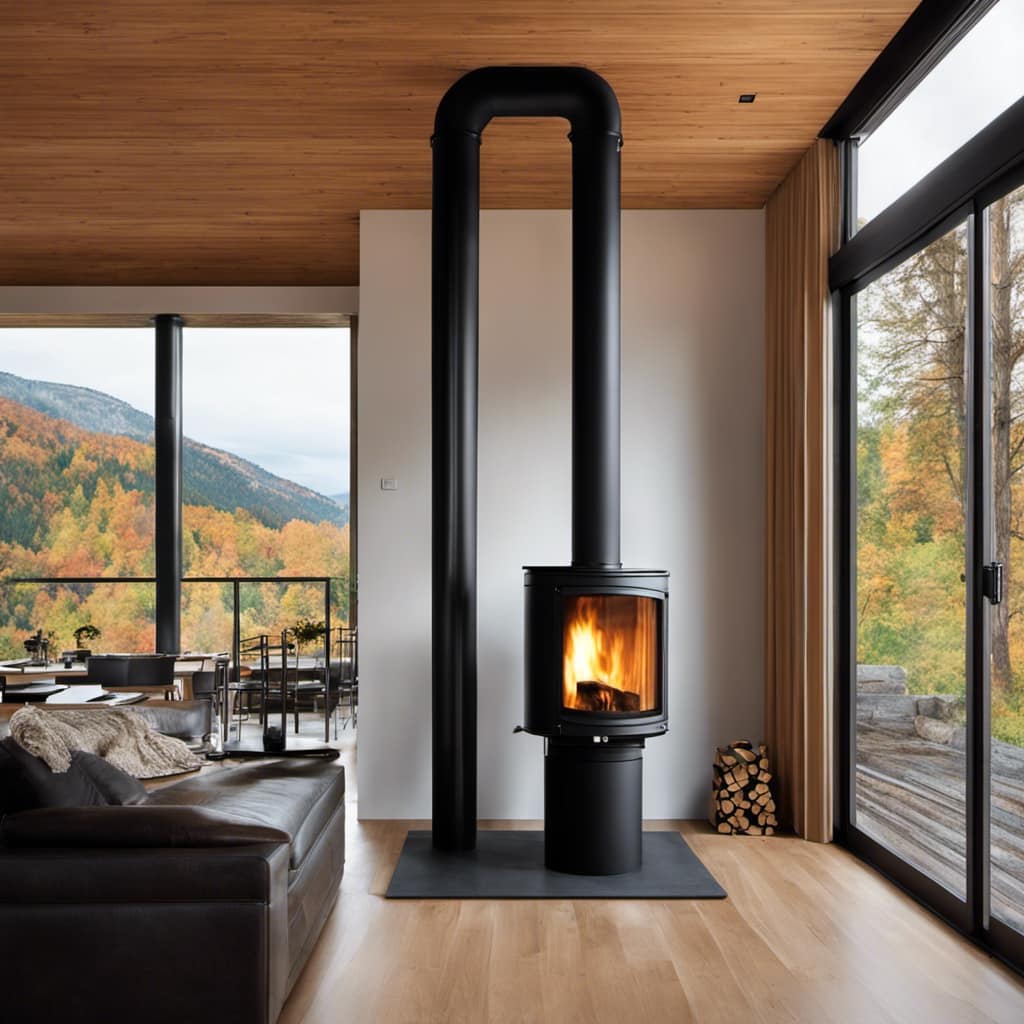
If you encounter any problems with the flue, troubleshooting is necessary. Common issues include a stuck or blocked flue, which can be resolved by cleaning and lubricating the mechanism.
Regular maintenance and inspection of the flue will ensure its proper functioning and keep your wood stove operating safely and efficiently.
Adjusting the Damper: Controlling Heat Output
When adjusting the damper, I can control the heat output of the fire. The damper is a crucial component of a wood stove that allows me to regulate the amount of air flowing into the firebox. By adjusting the damper positions, I can effectively troubleshoot heat control issues and create the desired temperature in my living space.
Here are four key damper positions and their effects on heat output:
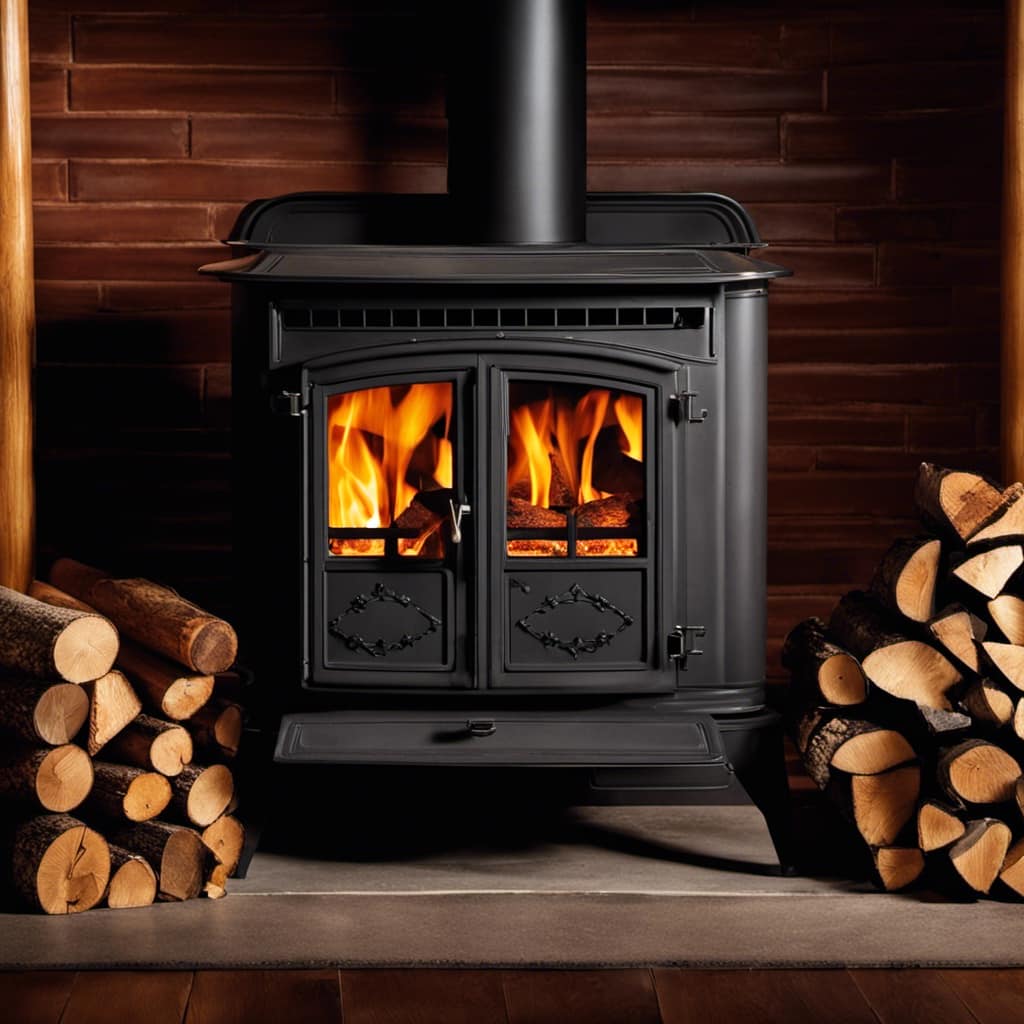
Fully Open: This position allows maximum air intake, resulting in a hotter and more intense fire.
Partially Open: By partially closing the damper, I can reduce the air intake and moderate the heat output.
Halfway Closed: This position helps maintain a steady heat output for a longer period of time.
Fully Closed: Closing the damper completely restricts air intake, leading to a slower burn and lower heat output.
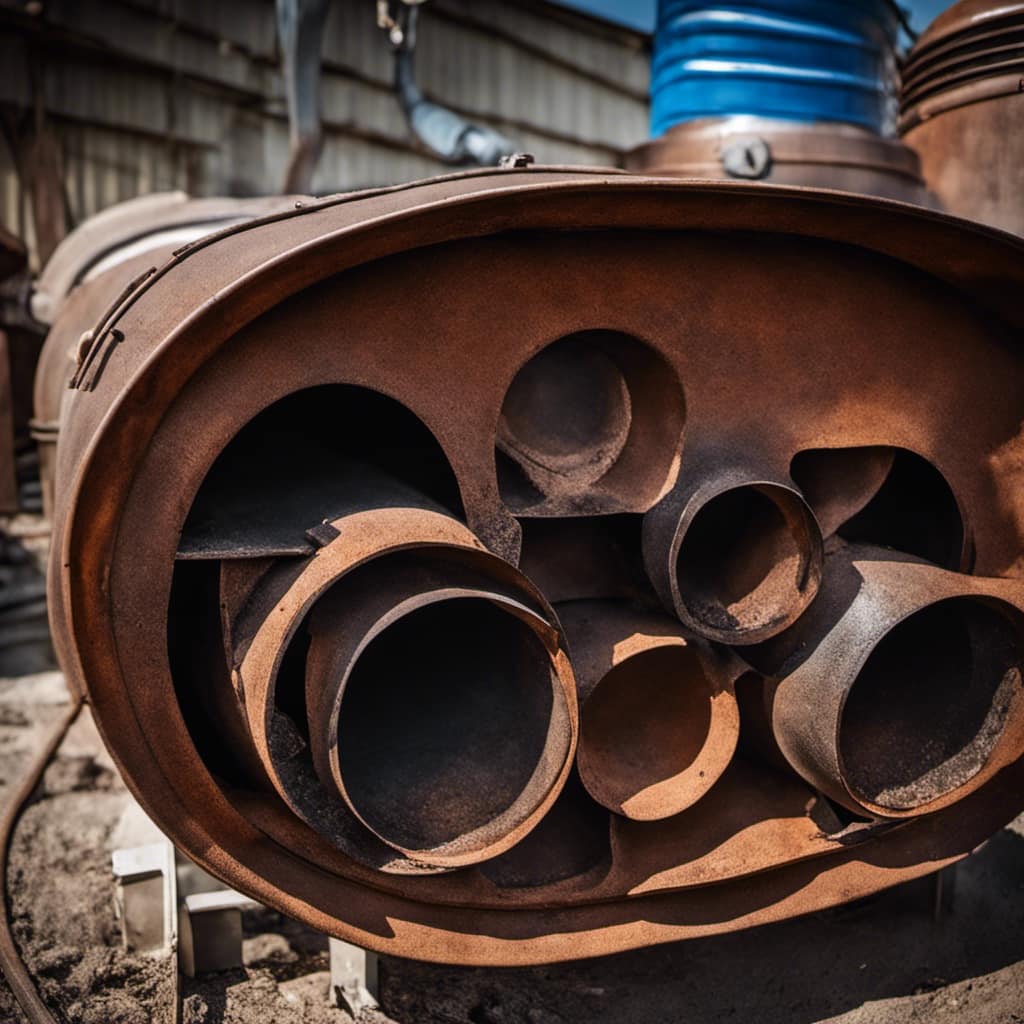
Maintaining Proper Ventilation: Flue Maintenance Tips
Maintaining proper ventilation is essential for ensuring the efficient operation of my fireplace. To prevent creosote buildup and troubleshoot common flue issues, I follow these flue maintenance tips:
| Flue Maintenance Tips | Benefits |
|---|---|
| Regular cleaning | Prevents creosote buildup and reduces the risk of chimney fires |
| Inspecting for damage | Identifies any cracks or obstructions that may hinder proper ventilation |
| Clearing blockages | Ensures proper airflow and prevents smoke from backing up into the house |
| Checking damper | Adjusts the flue opening to control the draft and heat output |
| Installing a chimney cap | Prevents debris, animals, and rainwater from entering the flue |
Maximizing Performance: Flue Techniques for Efficiency
By optimizing my flue for greater efficiency, I can maximize the performance of my fireplace. Here are four techniques that can help improve the efficiency of your flue:
Flue Insulation: Insulating the flue can prevent heat loss and improve the overall efficiency of your fireplace. By using specialized insulation materials, you can keep the flue warm and prevent drafts.
Sealing Leaks: Check for any gaps or cracks in the flue and seal them properly. These leaks can lead to drafts and decrease the efficiency of the flue. Use fire-resistant sealants or insulation to seal any openings.
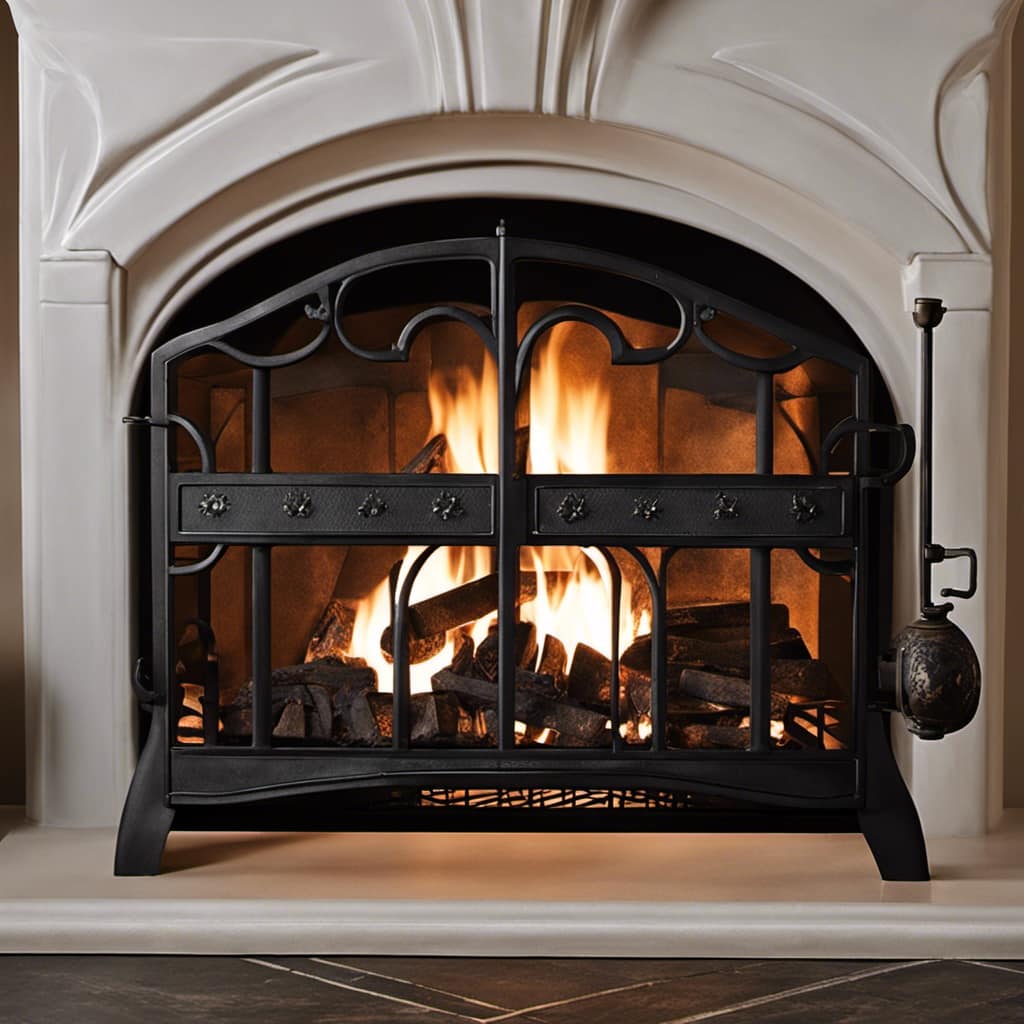
Using a Damper: A damper allows you to control the airflow through the flue. By adjusting the damper, you can regulate the amount of oxygen reaching the fire, optimizing combustion and reducing the chance of drafts.
Regular Maintenance: Regularly clean and inspect the flue to ensure it’s free of debris and blockages. This will help maintain proper airflow and prevent drafts.
Can Using a Wood Stove Damper Affect the Function of the Flue?
Using a wood stove damper can significantly affect the function of the flue. When the damper is closed, it restricts airflow and can cause smoke and toxic gases to back up into the room. Proper wood stove damper use is crucial for the safe and efficient operation of the flue.
Frequently Asked Questions
Can I Use My Wood Stove Without a Flue?
I wouldn’t recommend using a wood stove indoors without a flue. It’s important to have a flue to safely vent the smoke and gases produced. Without one, you risk exposing yourself to harmful pollutants and the potential for carbon monoxide poisoning.
How Often Should I Clean My Flue?
To maintain a clean flue, it’s important to regularly clean it. Signs of a dirty flue include excess smoke, a strong odor, or poor stove performance. Cleaning frequency depends on usage, but typically once a year is recommended.
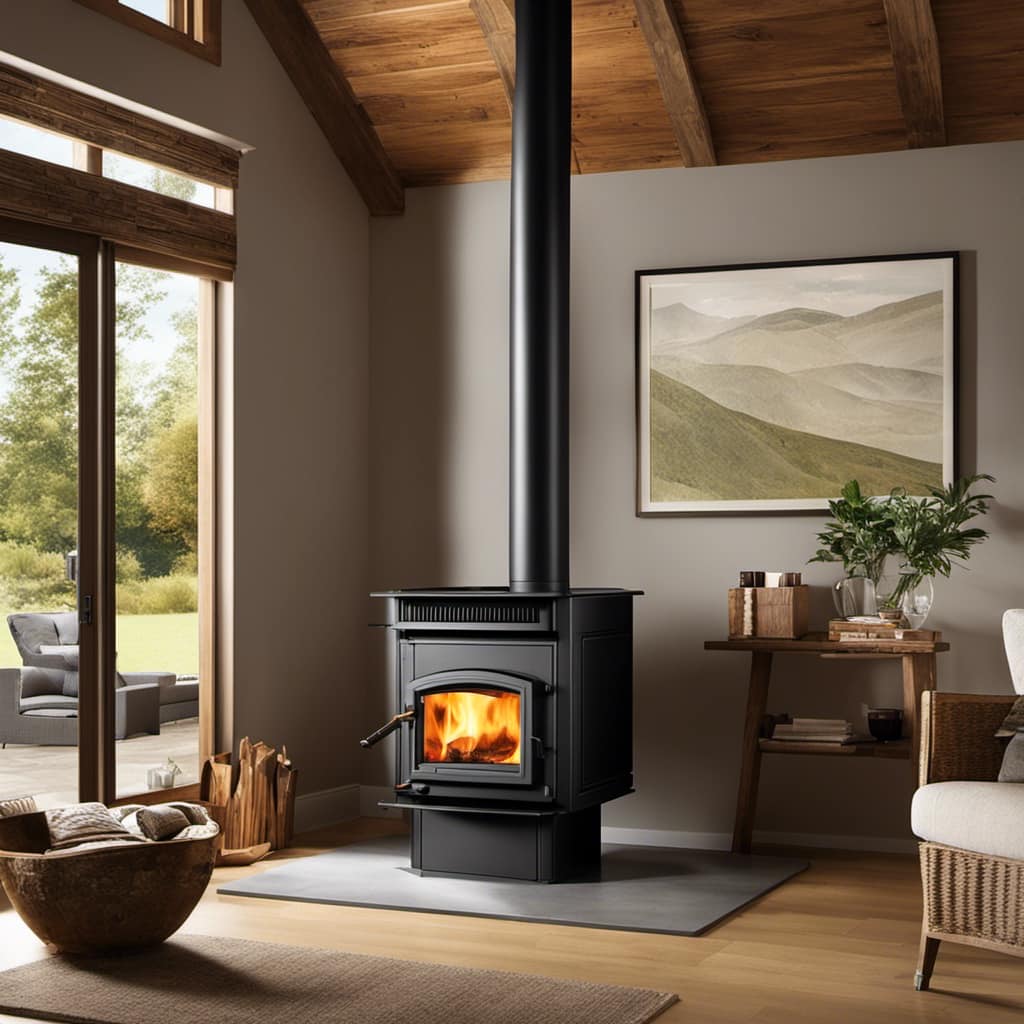
Can I Install a Wood Stove Without a Chimney?
Installing a wood stove without a chimney is possible, but it requires careful planning and consideration. Alternative options include using a flue pipe or a direct vent system. However, consulting with a professional is highly recommended for safe and efficient chimney installation.
What Should I Do if Smoke Is Coming Out of My Flue?
If smoke is coming out of my flue, I would troubleshoot the issue by checking for any obstructions, such as creosote buildup. Regular cleaning and maintenance of the flue are essential to prevent smoking issues.
Is It Necessary to Have a Damper on My Wood Stove Flue?
Is it necessary to have a damper on my wood stove flue? The pros of using a damper include increased control over airflow and improved efficiency. However, it requires regular maintenance and cleaning to prevent blockages and ensure proper functioning.
Conclusion
In conclusion, the proper use of the flue on a wood stove is crucial for maintaining a safe and efficient heating system.
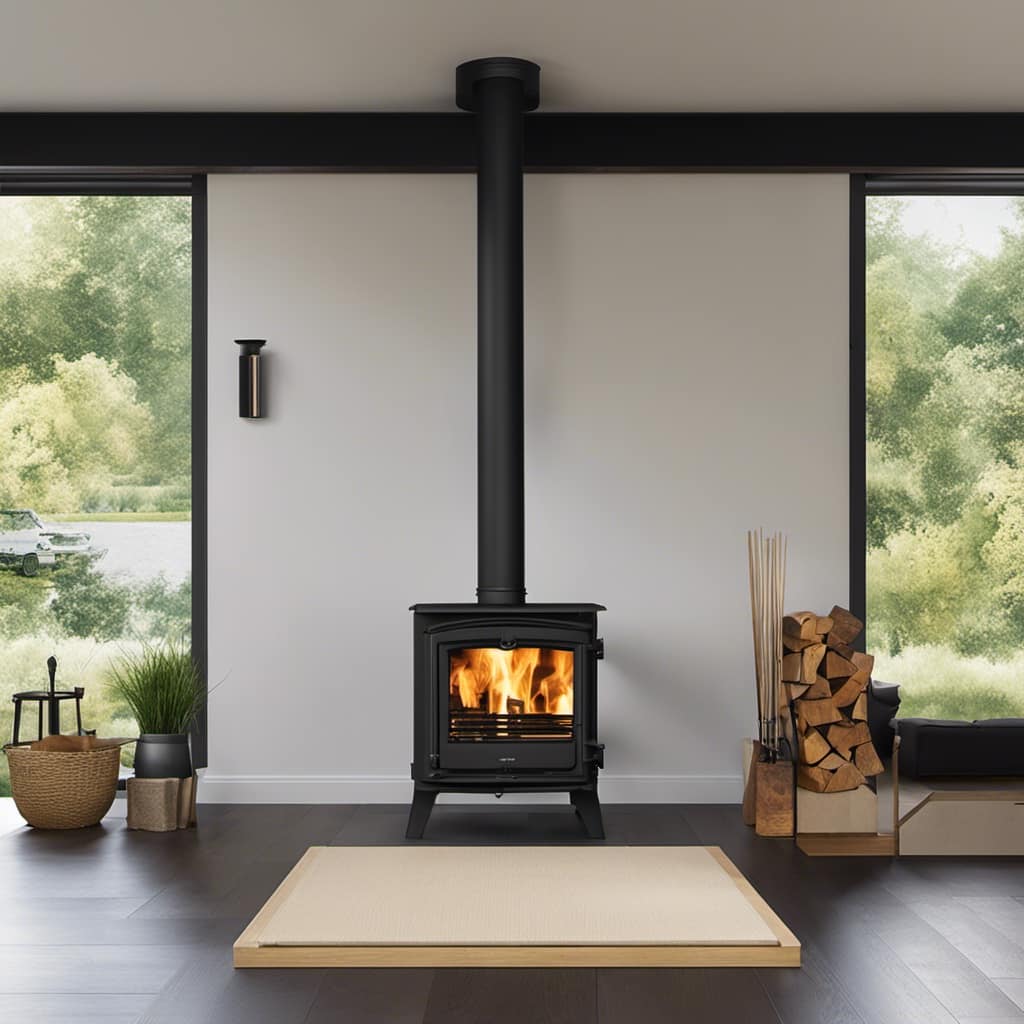
By understanding how to open and close the flue, adjust the damper, and ensure proper ventilation, you can maximize the performance of your wood stove.
Remember, a well-maintained flue not only controls heat output but also prevents the buildup of harmful gases.
So, don’t underestimate the importance of mastering these techniques for a cozy and secure wood stove experience.
Growing up surrounded by the vast beauty of nature, Sierra was always drawn to the call of the wild. While others sought the comfort of the familiar, she ventured out, embracing the unpredictable and finding stories in the heartbeat of nature.
At the epicenter of every remarkable venture lies a dynamic team—a fusion of diverse talents, visions, and passions. The essence of Best Small Wood Stoves is crafted and refined by such a trio: Sierra, Logan, and Terra. Their collective expertise has transformed the platform into a leading authority on small wood stoves, radiating warmth and knowledge in equal measure.





